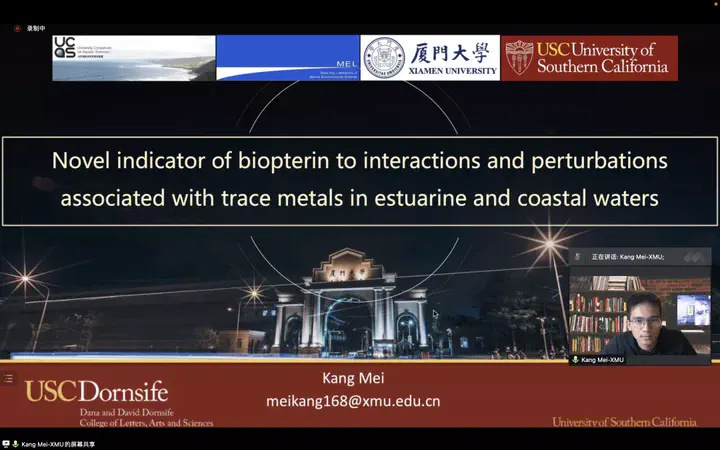【ORAL】🤓 Novel indicator of biopterin to interactions and perturbations associated with trace metals in estuarine and coastal waters, Southeast China
 Image credit: UCAS2022
Image credit: UCAS2022
Abstract
Biopterin, one of the pteridines, is a pivotal cofactor involved in enzymes activities like cyanobacterium phototaxis signaling transduction, photochemical oxidation, and UV protection in the ocean. However, due to its low contents, there are few studies regarding the measurement of biopterin in the waters, the biological functions and ecological significances remain largely unexplored. We implemented a modified method for measuring particulate biopterin mostly in phytoplankton and bacterium (170 ng/L of detection limit) in the estuarine and nearshore waters. Results identified biopterin ranging from 9.7–421.9 pmol L–1 (converted as in cells per volume) in the observed areas. The annual average is 25.5 pmol L–1, and the geological and seasonal distribution are as the following, Jiulong River > Transitional Estuary Area > Xiamen Bay; Summer > Spring, Autumn > Winter, respectively. By comparing the environmental properties, biopterin content is strongly positively correlated with Chl-a (R = 0.70), but negatively with pH, DO, and Salinity, suggesting that biopterin could probably be regulated by the abundance of phytoplankton. Results of trace metals distribution may be reflecting the severe perturbations of terrestrial anthropogenic sources via the Jiulong river runoff. Overall, the source of biopterin is mainly contributed by phytoplankton in waters, and as an ecological indicator be potentially applied to the assessment of nutritive levels. Our findings are expected to enrich our understanding of biopterin and trace metals in the field of bioindication and ecological implications under both natural and anthropogenic impacts.